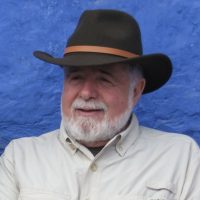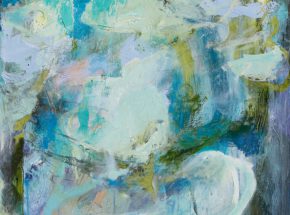

James Conaway has been a dedicated oil painter since his early high school years in the St. Louis area and is now a full-time artist who lives in Minneapolis, Minnesota. He works in his 1,500 square foot studio in a renovated historic building in the Warehouse District of downtown Minneapolis. Traffic Zone as the building is now called was founded in 1994 as an artists’ co-op of 23 mid-career artists. The artists and their partner, ArtSpace Projects, Inc., are 50/50 owners of this six-story building which consists of three floors of artists’ studios and three floors of commercial rate office space. Traffic Zone Center for Visual Art and their professional gallery have grown into an important cultural force and important resource in the Twin Cities community. Jim was one of the founders of this co-op and worked with eight other founders, fundraising and promoting the idea to Minnesota foundations and Minneapolis city leaders.
Jim is also a teacher. He taught painting, drawing and ancient art history at the college and university level for 38 years. For 10 years he also took university students to historic locations in Egypt, Turkey, Greece, Italy and Eastern Europe for “J” term classes. Since his retirement from teaching in 1996, he has been a full-time artist and once a year he leads specialized adult group tours to important sites in Europe, South America or Asia. These tours are fundraisers for the Fine Arts Board programs at Plymouth Congregational Church in Downtown Minneapolis.
For the past 12 years, Jim’s paintings were influenced by his study and fascination with Byzantine icons. His “icons” are about the spirituality of the landscape and are painted on pieces of old wood that once had a different life and meaning. The old pieces of wood fascinate him because of their patina of time and neglect which he incorporates into his landscape to help define landscape forms. The wood takes an active part in the landscape and according to Mary Abbe, a critic for the Minneapolis Star Tribune, “his paintings on worn wood help define the landscape.”
Conaway calls his landscapes “studio inventions” and says “they do not exist anywhere.” His landscapes have never been about a sense of place, naturalism or realism but are a result of his dialogue with the painting. “This dialogue comes as a result of my experience of drawing in the landscape and my knowledge of classical aesthetics and art history.”
The new paintings on Jim’s Traffic Zone website are a continuation of his “Icons,” but instead of spirituality his interest is more in the force and power of light and color as a vehicle for moving your eye around the surface of the painting and into deep space and out again. The painting surface is covered with more paint and larger brush strokes, which make the images more abstract which is more emotional than spiritual.
